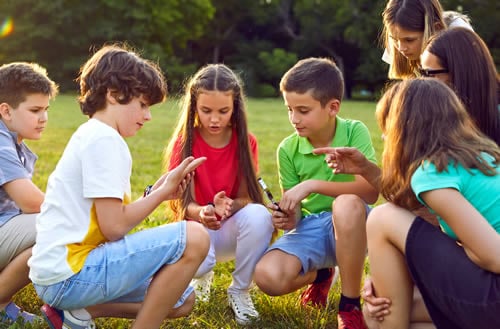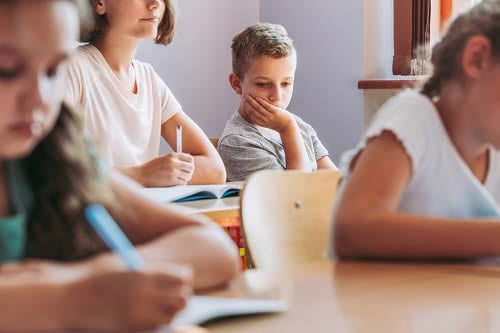Going to school is as much about making friends – and falling out with them – as it is learning your times tables. But for pupils with special needs who might feel ‘different’ or struggle to understand social relationships, this can be bewildering and stressful. Meanwhile, those who are home-schooled might have less exposure to the complexities of playground interaction but also less opportunity to learn to get on with others and manage conflict. How can teachers and parents help?
Natalia D’Onofrio Bianchini runs ‘Wildlings’, an outdoor education facility in rural Oxfordshire. She says that a lot of her customers have SEN or are home-educated. Under the careful eye of facilitators, children are allowed to play as they like in the forest and choose how they interact with others (providing there is no name-calling or hitting). This, she says, connects them to their own needs which may have been pushed under by the school system or family life.
“Humans need to connect with each other – it’s the basis of wellbeing,” Natalia comments. “When a child has personal agency to do this in their own way, without masking or meeting other people’s agendas, you see their whole body-system soften. They might say, for example, ‘I’m not ready to do that,’ or, ‘I need space,’ but even though they might be separate for a while, they’re part of the group. It’s still about interconnectedness. The more they have the opportunity to practise this, the more they can carry it into day-to-day life.”
Conflict is an Inevitable Part of Life

When it comes to conflict, she says that society as a whole tends to be uncomfortable with discord. “But conflict is a wonderful opportunity to learn about ourselves and each other. If there is a disagreement at Wildlings, we hold a mini-meeting. Children learn to speak for themselves using, ‘I feel’ statements rather than saying, ‘You did such-and-such’. It’s about listening to the other person.”
The facilitators don’t force a resolution to any friction, Natalia says, as this is disempowering for young people. Often, she adds, a particular outcome isn’t needed, anyway, and the children move on from the conflict in their own time.
A Diagnosis of ASD can Make Conflict More Likely

Specialist SEN tutor Jane points out that all kids with SEN run the risk of being singled out at school for being different from their peers but that children with autism, in particular, are more vulnerable to misunderstandings and difficult relationships.
“I’ve spoken to a number of autistic adults and older teenagers who tell me that they look back and wish they’d been able to tell their classmates how they were feeling and help them understand their difficulties,” she explains. “But of course, when you’re very young, you don’t have the maturity to do that.
“It might be helpful instead for a trusted adult to give a child a simple sentence that they can use to explain their condition – though the child needs to be confident enough to do this,” she ponders. “It’s also beneficial if there’s a SENCO or a teaching assistant who can step in and help the young person with any conflicts.”
Helping a Child to Face Their Challenges

Jane recalls working as a class teacher and mediating in arguments by getting all parties to sit quietly and write down their own version of events. This, she says, allowed children to calm down and reflect on what happened without further shouting or tears.
It’s also important, she continues, for families to accept their child’s diagnosis and talk to the young person about their challenges. “But these conversations can be difficult and they need to be handled sensitively,” she cautions. “For example, I taught one young man with ASD who had a habit of dominating conversations and only talking about what he was interested in. I told him that he had to let other people have a turn sometimes. He had two good friends and I suggested one of the boys could say to him, ‘I need to speak now’. Luckily, his friends were kind people so it worked really well.”
Jane is also a big fan of role-play to help children gain a better understanding of social situations and often used it with her own kids when they were young. “You can get a child to play both roles in a situation – themselves and a person they don’t get on with, for example,” she suggests. “This gives them the opportunity to feel what it’s like for the other person and find different ways of responding.”




